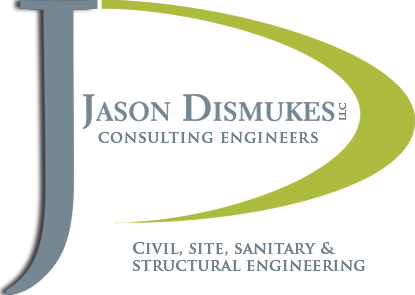

Civil Engineering Services in Connecticut
← Back to ServicesSeptic Systems
What is a Septic System?
Septic Systems are predominantly found in rural areas where houses are spaced widely apart and lot sizes are generally larger then in city settings. They are highly efficient, self-contained, underground wastewater treatment systems. Septic systems are a type of onsite sewage facility which requires large drain or leach fields. They are comprised of one or more concrete or plastic tanks, generally between 1,000 to 2,000 gallons, connected to an inlet wastewater pipe from the building to a series of outlet pipes leading to a septic drain field or leach field. Within the tank are chambers where the solids settle to the bottom of the tank to later be pumped out by a fecal sludge management professional. The liquids continue on to the remaining chamber to continue the settlement process until a relatively clear liquid is left. That liquid drains out into the leach, drain or seepage field. In the field, the liquid seeps into the soil where impurities are trapped and bacteria process the effluent.
Who designs a Septic System?
Jason Dismukes, LLC has developed a keen ability to design septic systems for residential, municipal, and commercial properties over the years. The process begins with a visit to the property to perform soil testing. The soil must be tested to assess whether or not the property can support a septic system. Soil testing consists of digging deep pits with an excavator and reading the soil profile. Then, percolation tests are performed by pouring water into a hole which is dug to the bottom of the subsoil layer, ascertained from the soil profile, and then timing the water level as it percolates into the soil. The measurements and corresponding times are used to determine absorption rate. The speed of absorption determines the size of the required leach field. The perc test is indicative of the long term acceptance rate of the soil.
What if my septic system fails?
Jason Dismukes, LLC also has considerable experience designing septic system repairs. Typically when a failure occurs in the primary system, a new system is constructed in an alternate location. Many challenges may arise when siting a repair system. These include meeting building and well setback requirements on the client's property as well as setbacks on neighboring properties. Soil and perc testing are required to locate a new site for the system. Regular maintenance of your septic system is vital to the proper functionality of the system. Maintenance includes; regular inspection and pump out of the system and tank(s), efficient use of water, care and maintenance of the leach field, and no hazardous waste disposed of in the sinks, toilets or tubs that drain into the system.
How does an addition to my structure affect the septic system?
Additions to homes and businesses or an accessory structure, are often improvements that can increase the septic discharge. This may require a, code compliant, reserve septic area to be located on a property. In most cases, such expansions were not considered when the initial construction was completed therefore, setback requirements from wells, wetlands, watercourses, foundation drains, and property lines must by met in order to get approval for the addition. Jason Dismukes, LLC strongly advise determining the reserve area requirements and locating this area early in the planning process for your expansion.
